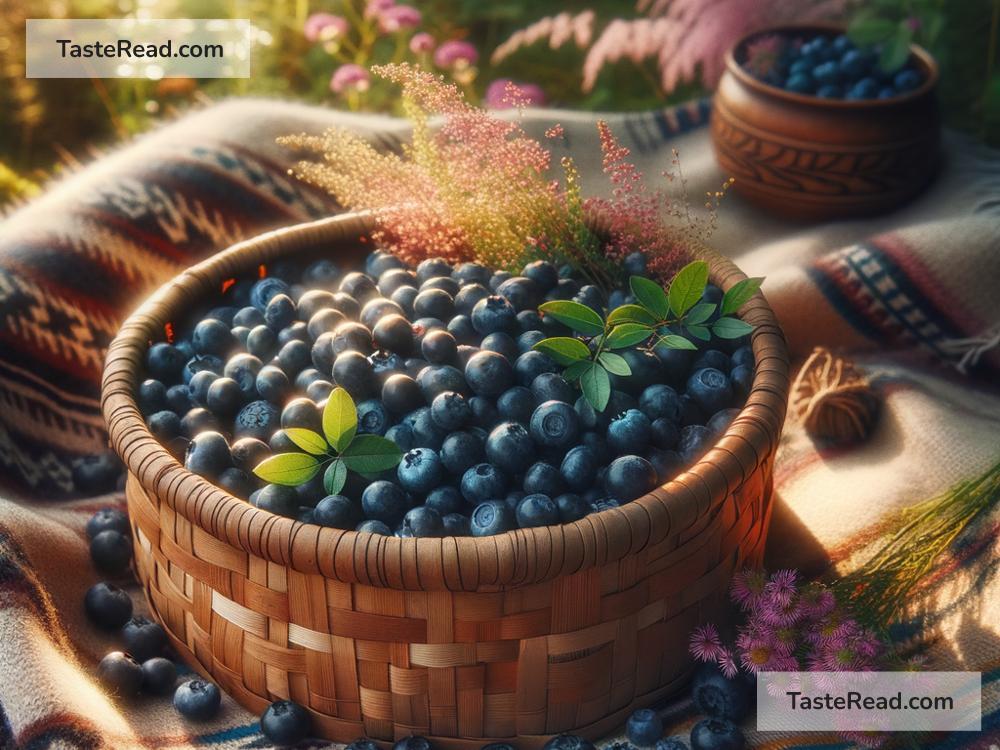The Curious Story of Blueberries in Native American Culture
Blueberries are small, sweet fruits that many people enjoy today in smoothies, pies, or simply as snacks. But did you know these tiny fruits have a long and fascinating history? For Native American tribes, blueberries were much more than food—they were symbols, medicine, and tools for survival. In this blog, we will explore how Native Americans cherished blueberries and how this humble fruit became an important part of their lives.
A Sacred Gift from Nature
Native American tribes believed that every part of nature was connected to the spirit world. They saw blueberries as a gift from the Creator, sent to help them survive tough times. In Native legends, blueberries were often described as sacred fruit that brought health, healing, and sustenance to the people.
One story tells of a time when tribes faced famine. Food was scarce, and hunger swept through their communities. According to this legend, the Creator sent blueberries to grow on the land to save the people. The berries, with their deep blue color, came to represent hope, renewal, and the connection between humans and nature.
Using Blueberries as Medicine
Native Americans didn’t just eat blueberries—they used them to heal illnesses, too. The berries, leaves, and roots of the plant were believed to have special medicinal properties. These parts were often made into teas, poultices, or powders to treat various health problems.
For example, teas made from blueberry leaves were used to calm stomachaches or relieve diarrhea. The fruit itself was considered beneficial for the heart and kidneys. Native healers would also mash blueberries and apply them to wounds or burns to help with healing. Even today, scientists recognize the health benefits of blueberries. Modern research shows they are rich in antioxidants, which fight free radicals and help protect the body against disease. Native Americans understood these benefits long before any research existed!
Blueberries as Food and Survival Tools
Blueberries were an essential food source for Native American tribes. In the summer, they gathered the berries fresh from bushes, eating them raw or adding them to other dishes. The berries were nutritious and packed with energy, making them perfect for long days of work or travel.
But Native Americans didn’t stop at eating blueberries fresh—they also found creative ways to preserve them for later. Blueberries were dried in the sun and stored for use in winter months when food was harder to find. Sometimes, the dried berries were mixed with meat to make pemmican, a high-energy food that could last for a long time without spoiling. Pemmican was especially useful for hunters and travelers who needed portable, nutritious meals.
The tribes also used blueberry juice as a natural dye. The rich blue color was perfect for coloring fabrics, baskets, or ceremonial objects. This showed how blueberries weren’t just food—they were also part of creative and spiritual life.
Spiritual Meaning of Blueberries
For many Native American tribes, blueberries held deep spiritual meaning. Their round shape and blue color were thought to symbolize the circle of life and the great sky above. The berries were often included in ceremonies and rituals to honor the Creator and give thanks for the blessings of nature.
Some tribes would incorporate blueberry dishes into feasts, weddings, or other important events. This wasn’t just about enjoying the taste—it was also about respecting the spiritual importance of the fruit. Blueberries were reminders of the sacred relationship between humans and the earth.
Teaching Through Blueberries
Native Americans also used blueberries to teach the younger generations about survival, respect for nature, and gratitude. Elders would take children on berry-picking trips, teaching them how to recognize ripe berries, where they grew best, and how to harvest them without damaging the plants.
These trips were more than just gathering food—they were lessons about life. Elders would share stories about the Creator’s gift of blueberries and explain the importance of taking only what was needed to leave enough for future harvests. This showed children how to respect the environment and live in harmony with the land.
Blueberries Today
Today, blueberries are a beloved fruit all over the world. Modern farms make it easy for people to buy them year-round, but it’s important to remember their origin. Native Americans were among the first to recognize the value of blueberries, and their connection to the fruit offers lessons about gratitude, resourcefulness, and respect for nature.
When you eat blueberries, take a moment to appreciate their long history. These berries were once life-saving medicine, spiritual symbols, and survival tools for Native American tribes. The story of blueberries reminds us how powerful nature can be and how the smallest things—like tiny blue berries—can play a big role in our lives.
Conclusion
The curious story of blueberries in Native American culture is rich with meaning. These small fruits were not just food—they were medicine, symbols of hope, and tools for survival. Native Americans honored blueberries as sacred gifts from the Creator, teaching future generations to respect the earth and all it provides. So, the next time you enjoy a handful of blueberries, remember their amazing history and the vital role they played in the lives of Native American tribes.


